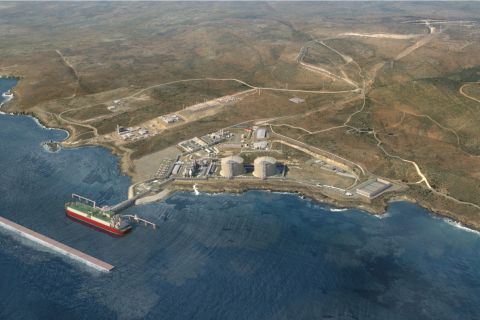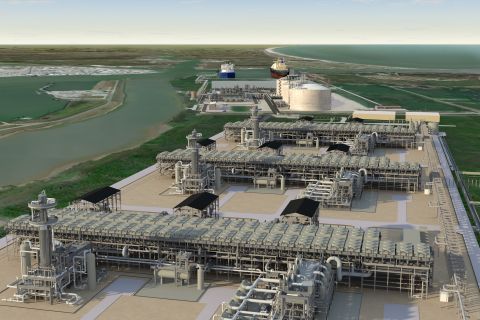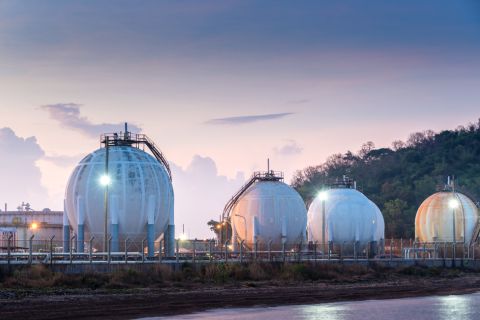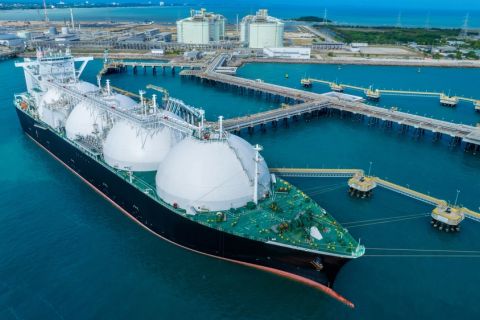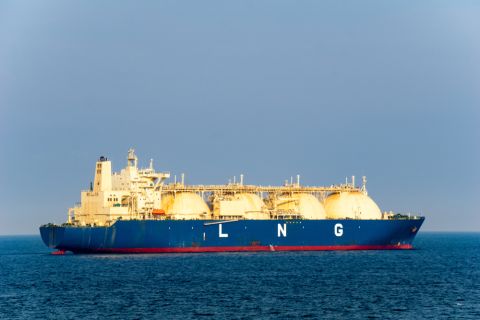?In 1997, T. Boone Pickens formed BP Capital in Dallas with a small group of trusted associates. That first year, the fund lost money nearly every month—a setback on the heels of Pickens’ prior successes. By January 1999, less than $5 million was left. He kept things simple, however, gathering all the information he could, and came roaring back. After working to effect a major turnaround in his mood and increase his physical fitness routines, Pickens went looking for more investors in 2001. Later, the fund made a play in natural gas that turned out to be a big win in 2003. Here, he explains how the fund kept growing. He kept buying oil futures throughout 2004 and 2005, and in the latter year he ended up seeing the biggest move in oil futures in 20 years. That year, his two funds (one for commodities, one for securities) were up 248% and 89%, after fees.
Here is an excerpt from his new book, The First Billion is the Hardest: Reflections on a Life of Comebacks and America’s Energy Future, published this month by Crown Business, a division of Randomhouse Inc.
With challenge comes opportunity. There are still going to be opportunities for the producer and the investor in the oil business. However, it’s not the same oil business that it was when I got into it in 1940, pumping gas for 11 cents a gallon at Ray Smith’s Sinclair station in Holdenville, Oklahoma. And it’s worlds away from the oil business that my dad got into in 1923. In the decades since, the oil business has changed several times, and the next one will be a dramatic one.
There’s no question that, if you can change with it, if you can understand and follow the fundamentals, you can still make a lot of money in oil and gas, which is exactly what we did on an unprecedented level in late 2004 and early 2005.
Every commodity is governed by the forces of supply and demand. If you grow more corn, the price goes down. When corn is in short supply, the price goes up. When we analyzed the oil and gas futures markets in the spring of 2003, supply was the strongest indicator of future pricing. And it was clear that the biggest influences on supply were going to include the war in Iraq, other unrest in the Middle East, and uncertainty in Nigeria and Venezuela.
On March 2, a New York Times headline was “Jump in Price of Oil Puts New Strains on Economy.” It reported, “The potential war in the Persian Gulf, political chaos in Venezuela, and a cold winter in the United States caused the price of a barrel of oil to soar to almost $40 on Thursday, the highest since Iraq invaded Kuwait in 1990, before it retreated to $36.60 on Friday in New York. That is up about 69 percent from a year ago.”
Immediately following the U.S. invasion of Iraq on March 19, the price of oil slid to $26. There had been a steep run-up in oil prices in anticipation of the war. By the time the invasion came, it was anti-climactic—at least as it affected the price of oil. If you’d asked someone before the invasion “Why are you buying oil?” the answer would likely have been, “Because we are about to invade Iraq.” After the invasion, that reason was gone and the price went down. The same thing happened in 1991 in the first Gulf War. The price of oil went up before the invasion, then collapsed the week afterward.
By May, oil futures were trading at about $30 a barrel, a low price considering how much it costs to find and produce oil. I knew that was too cheap. I was convinced that Iraq’s production after the invasion was not going to recover as quickly as most thought. When we invaded, Iraq’s oil production was between 2.5 million and 3 million barrels a day. After the invasion, it dropped to almost zero. Over time, it has slowly inched back up to 2 million barrels a day.
Consider my three rules of energy. No. 1: The cost of finding oil and gas is always higher than you originally think. No. 2: Oil and gas always take longer than expected to get on production. No. 3: Discoveries are never as large as producers originally think.
Think of a tennis ball and how it bounces: The first bounce is the highest. Your initial discovery of oil and gas on Day 1 is like the first bounce. As you learn more about the discovery and actually start to produce, you’ll usually find that estimates of the reserves “bounced” better at first. More often than not, you’re disappointed by subsequent estimates. That’s the nature of this game.
These rules held true for Iraq in the spring of 2003. When you knock out an entire OPEC-member nation’s production, it’s not going to bounce back fast. With production down and demand rising, there was only one direction for oil prices to go: up!
We (at BP Capital) had been long oil since the fall of 2002, so we understood that there were factors other than the impending invasion of Iraq. The world economy was growing after a slight recession in 2001. Plagued by accounting scandals and weak profit reports, the stock market had fallen for three years in a row. The stock market had a huge year in 2003, with the S&P up 40% from May 2003 lows.
Two of our indicators signaled that we should be buying oil: the growing economy and the likelihood that Iraqi production would be slowed for a long time. By December 2003, nine months after the invasion, the price of oil hit $30 a barrel. There was talk of a “terrorist premium,” a $5- to $10-per-barrel extra cost that I found no basis for. There was never any terrorist premium. It was just the market. By this time, the conventional wisdom was that oil prices had already topped out. The thinking went, “The price of oil should be $20, and it’s now $30. That’s 50% higher than it was just six months ago. It can’t go much higher than $30. You’re going to kill demand.”
That’s what most people thought. I disagreed, and I still don’t know how high it has to go before you kill demand. After the price of oil reached a low of $26 in May 2003, it went up to $33 by the end of the year, and I still wanted to buy more oil. Not only was conventional wisdom against that, but at times my own team wasn’t convinced. Yet the fundamentals pointed to an even bigger rise. So, if oil was down a dollar, I’d tell my guys, “We should be buying the pull-backs.”
By May 2004, oil had gone from $30 to $40, a gain of $10 in the first five months of the year. Again, conventional wisdom was screaming to get out of the market. “The price is too high! You’re going to kill demand, and the price is going to fall back to $20!” Yet the price kept moving higher: $30, then $40, then $50. The price would reach a level where it would briefly affect demand, and then demand would go up again.
By this time, we had begun one of the best plays in our history. Opportunities of this magnitude are not like streetcars. They don’t come by every 15 minutes. They come by every few years. The key is to spot them, get onboard, and don’t be quick to get off. Stick with it. M
Recommended Reading
Permian Gas Finds Another Way to Asia
2024-04-30 - A crop of Mexican LNG facilities in development will connect U.S. producers to high-demand markets while avoiding the Panama Canal.
Segrist: The LNG Pause and a Big, Dumb Question
2024-04-25 - In trying to understand the White House’s decision to pause LNG export permits and wondering if it’s just a red herring, one big, dumb question must be asked.
US Expected to Supply 30% of LNG Demand by 2030
2024-02-23 - Shell expects the U.S. to meet around 30% of total global LNG demand by 2030, although reliance on four key basins could create midstream constraints, the energy giant revealed in its “Shell LNG Outlook 2024.”
CERAWeek: JERA CEO Touts Importance of US LNG Supply
2024-03-22 - JERA Co. Global CEO Yukio Kani said during CERAWeek by S&P Global that it was important to have a portfolio of diversified LNG supply sources, especially from the U.S.
Silver Linings in Biden’s LNG Policy
2024-03-12 - In the near term, the pause on new non-FTA approvals could lift some pressure of an already strained supply chain, lower both equipment and labor expenses and ease some cost inflation.

